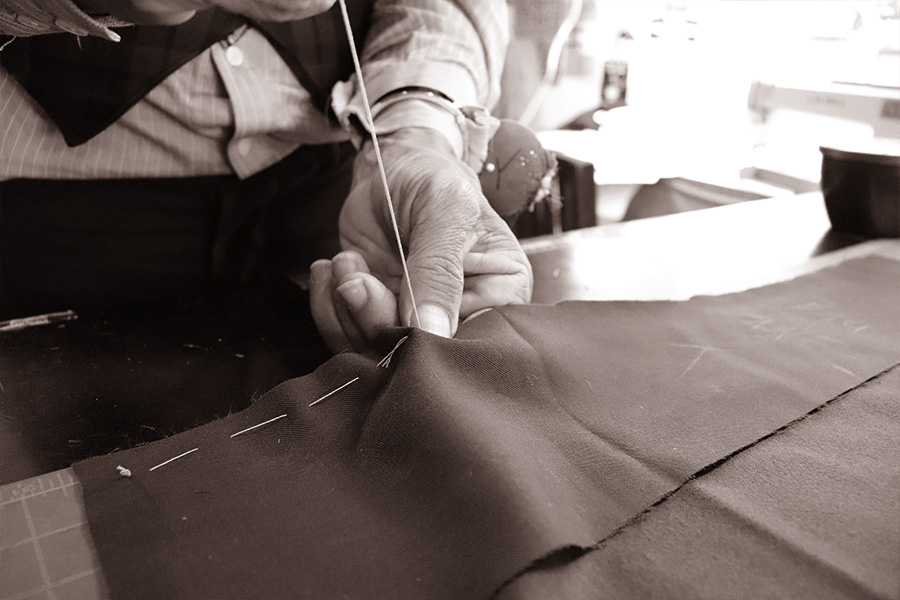Tailor Perth Quality: Where High Quality Meets Personalized Tailoring
Tailor Perth Quality: Where High Quality Meets Personalized Tailoring
Blog Article
Comprehending the Tailoring Process: From Fabric Choice to Last Fitting for the Perfect Closet
The customizing process is a complicated interplay of art and scientific research, starting with the crucial choice of fabric selection and finishing in the precise modifications of final installations. Each material kind brings one-of-a-kind top qualities that influence not just the visual allure however also the garment's long life and suitability for different occasions. Recognizing the nuances of tailoring strategies can raise one's wardrobe to unprecedented degrees of sophistication. As we explore these aspects even more, one need to consider how also the smallest information can significantly impact the general result of one's personal design.
Importance of Fabric Selection
Choosing the appropriate fabric is essential in the tailoring procedure, as it straight affects the comfort, sturdiness, and total visual of the final garment (tailor perth). The selection of textile establishes the structure for the garment's design, capability, and efficiency. Different textiles have unique properties, such as weight, breathability, and stretch, which can considerably impact how the garment drapes and fits the body
Moreover, textile selection impacts the garment's longevity and ease of treatment. Top notch fabrics can withstand wear and tear, maintaining their look and framework gradually, while lower-quality materials may lead to pilling or fading. In addition, the ideal textile adds to the garment's ability to shift throughout seasons and events, therefore boosting adaptability.
A tailored item made from an ideal material not only showcases workmanship however additionally raises the wearer's confidence. Consequently, recognizing the subtleties of fabric option is critical for any kind of tailoring undertaking. It makes certain that the end product not just meets the aesthetic wishes of the client yet additionally lines up with functional demands, thus achieving an unified equilibrium in between form and function in the customized closet.
Kinds Of Fabrics and Their Usages
Comprehending the various sorts of textiles offered is essential for making notified decisions throughout the tailoring procedure. Each textile possesses distinct characteristics that dictate its suitability for specific garments and events.
Cotton, known for its breathability and gentleness, is perfect for laid-back wear and summertime clothing. Its convenience allows it to be tailored right into every little thing from tee shirts to outfits. Wool, on the other hand, is preferred for its warmth and framework, making it an outstanding selection for official suits and outerwear - tailor perth. Its all-natural flexibility assists garments maintain shape gradually.
Silk exudes deluxe and is lightweight, making it ideal for eveningwear and fragile shirts; nonetheless, it calls for careful handling because of its delicacy. Bed linen, with its distinctive coating, is a preferred option for cozy environments, giving a airy and crisp feeling, but it wrinkles easily, which may affect the garment's appearance.
Synthetic materials, such as polyester and nylon, deal resilience and resistance to wrinkles, making them suitable for everyday wear and active garments. Understanding these fabric types and their properties enables better decision-making, guaranteeing that each tailored piece not just fits well yet additionally straightens with the desired function and event.
The Tailoring Techniques Discussed
The art of customizing depends on a variety of strategies that change material right into well-fitted garments. Central to this procedure is pattern preparing, where a tailor develops themes based on the client's measurements and wanted design. This preliminary action ensures that the garment will fit the user effectively before any kind of reducing occurs.
When patterns are established, reducing methods come into play. Accuracy is critical as mistakes can bring about misfitting garments. Tailors often make use of various reducing methods, such as single-layer cutting for intricate styles and multiple-layer cutting for effectiveness on conventional patterns.
Basting is another important strategy, enabling dressmakers to temporarily sew textile pieces with each other for a preliminary installation. This technique supplies the possibility to examine the drape and overall silhouette prior to final stitching.
Seaming techniques, including flat-felled seams and French joints, boost the garment's durability and visual appeal. Tailors likewise use methods such as interfacing and extra padding to offer structure and form to particular locations, like collars and shoulders.
Finally, finishing methods, consisting of hemming and edge completing, make certain the garment's longevity while providing a polished appearance. With each other, these techniques form the backbone of efficient tailoring, resulting in charming, custom-fit garments.
Suitable Modifications and Considerations

Trick considerations include the shoulder fit, which should neither sag neither limit movement, and the sleeve length, which need to permit comfy arm movement while maintaining a polished appearance. Furthermore, adjustments at the waistline can improve the shape, with choices to allow out or absorb material as required.
The surge of pants is another important element; it should rest easily above the hips without triggering pain, allowing for ease of activity. Hemming sizes for both trousers and skirts should mirror the wearer's recommended style while respecting percentages.

Preserving Your Tailored Apparel
Always adhere to the treatment tag guidelines, which might advise completely dry cleaning for delicate fabrics or equipment cleaning for even more long lasting materials. Avoid frequent laundering, as this can put on down the textile and change the garment's shape.
Storage is just as vital; use padded wall mounts for jackets and layers to preserve shoulder structure, and shop pants folded up neatly or hung to avoid creasing. Safeguard garments from straight sunshine, which can fade colors click to read more and damages fibers.
Furthermore, periodic evaluations for small fixings can avoid larger issues. Look for loose switches, fraying joints, or indicators of moth damages, resolving these issues promptly to keep the garment's integrity.
Last but not least, take into consideration seasonal turning. Wearing customized pieces in small amounts allows textiles to recover, extending their life expectancy. By implementing these upkeep techniques, you can ensure that your tailored garments continue to be as immaculate as the day you first used them, enhancing your excellent wardrobe for years to find.
Conclusion
The customizing process, including textile option, competent strategies, and precise fitting modifications, plays an important function in producing garments that boost both convenience and design. Understanding the he has a good point importance of maintenance extends the life of tailored garments, strengthening their value in a well-curated wardrobe.
Selecting the ideal material is essential in the customizing procedure, as it directly influences the comfort, longevity, and total visual of the last garment. The choice of material sets the structure for the garment's efficiency, functionality, and style. Different materials possess unique buildings, such as stretch, weight, and breathability, which can substantially impact exactly how the garment drapes and fits the body.
The art of customizing depends on a variety of strategies that transform fabric right into well-fitted garments.The customizing process, incorporating material option, skilled methods, and specific suitable modifications, plays a crucial duty in producing garments that boost both comfort and style.
Report this page